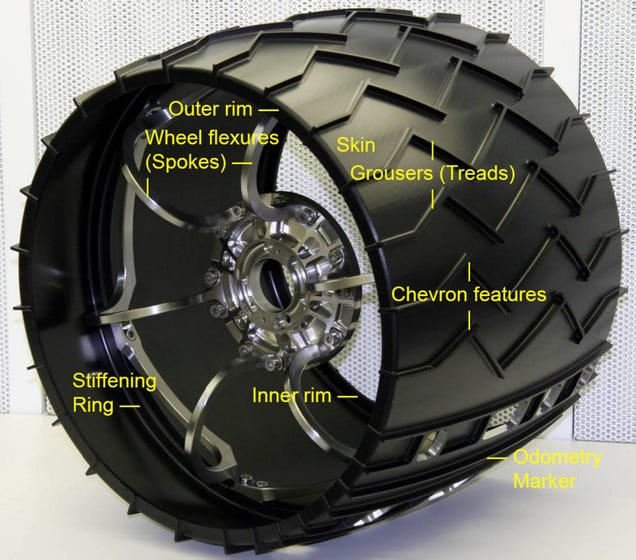Panza
Stainless
- Joined
- Oct 23, 2005
- Location
- Lillehammer, Norway
I just wonder what you think about the design of the wheels of the Mars Rover Curiosity ?
They are sustaining some serious damage from driving over rocks.
The wheels are machined from aluminium and the thin parts where there are no "threads" are 0,75mm thick. There is a thicker ring inside where the spokes are attached.
It's easy to say after the damage has occurred, but I say the design is pretty poor. Seems like some pretty obvious things have been overlooked.
For starters I wouldn't use aluminium where there is going to be flexing all the time. Then those machined stress-risers ?
Undamaged tire/wheel which shows the design:

Damaged wheel:

They are sustaining some serious damage from driving over rocks.
The wheels are machined from aluminium and the thin parts where there are no "threads" are 0,75mm thick. There is a thicker ring inside where the spokes are attached.
It's easy to say after the damage has occurred, but I say the design is pretty poor. Seems like some pretty obvious things have been overlooked.
For starters I wouldn't use aluminium where there is going to be flexing all the time. Then those machined stress-risers ?
Undamaged tire/wheel which shows the design:

Damaged wheel:




